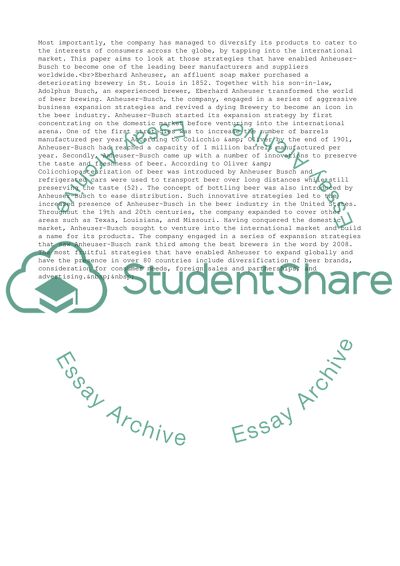Cite this document
(Anheuser-Buschs Expansion Strategies Case Study, n.d.)
Anheuser-Buschs Expansion Strategies Case Study. Retrieved from https://studentshare.org/business/1781379-the-senior-management-critical-decisions
Anheuser-Buschs Expansion Strategies Case Study. Retrieved from https://studentshare.org/business/1781379-the-senior-management-critical-decisions
(Anheuser-Buschs Expansion Strategies Case Study)
Anheuser-Buschs Expansion Strategies Case Study. https://studentshare.org/business/1781379-the-senior-management-critical-decisions.
Anheuser-Buschs Expansion Strategies Case Study. https://studentshare.org/business/1781379-the-senior-management-critical-decisions.
“Anheuser-Buschs Expansion Strategies Case Study”, n.d. https://studentshare.org/business/1781379-the-senior-management-critical-decisions.


